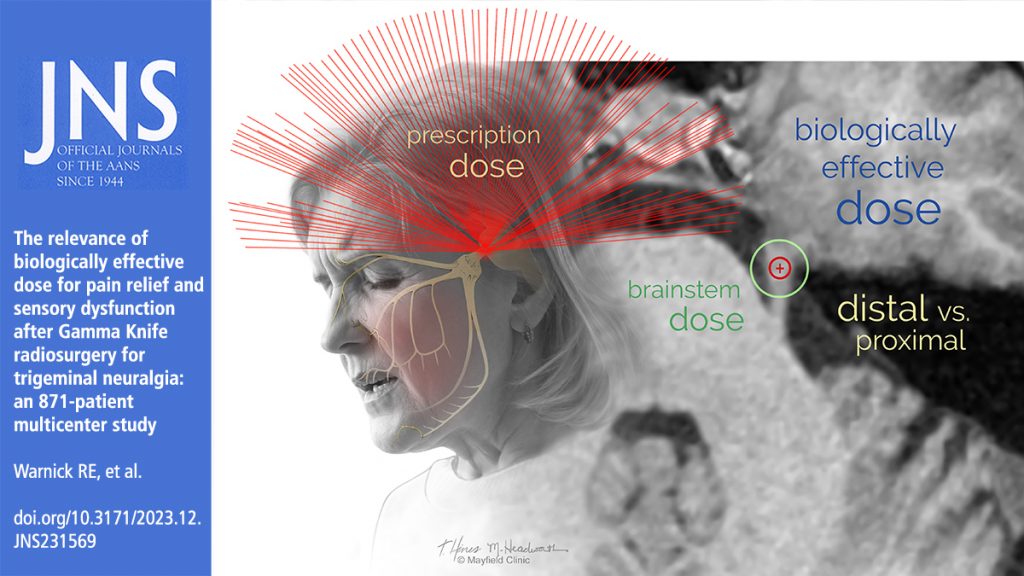New study led by Mayfield neurosurgeon outlines a pathway to pain relief and reduced medication use
Gamma Knife radiosurgery is a non-invasive outpatient treatment that provides long-term pain relief to patients suffering from trigeminal neuralgia, the neurological disorder marked by episodes of debilitating facial pain. In the past, patients were treated with a standard dose of radiation and could expect a 90% probability of pain relief and 2% risk of bothersome facial numbness. Now, physicians can determine a radiation dose and treatment duration for each patient to provide the highest likelihood of rapid pain relief, a reduced need for medication and a long-term reduction of symptoms.

“We believe that our personalized approach to Gamma Knife radiosurgery for trigeminal neuralgia will provide superior outcomes compared to the previous ‘cookie-cutter’ approach that did not take into account differences between patients.” – Dr. Ronald Warnick
The conclusions are in a groundbreaking new study led by Mayfield Brain & Spine neurosurgeon Dr. Ronald Warnick, one of the world’s leading researchers and practitioners in treating trigeminal neuralgia. Published in February in the Journal of Neurosurgery, this study provides a table that physicians can use to calculate a new measure called “biologically effective dose,” which provides a personalized treatment approach for each patient. This personalized treatment will rapidly relieve their facial pain and allow tapering of medications that can have distressing side effects.
“Gamma Knife radiosurgery can be a powerful tool to help relieve the pain of patients suffering from trigeminal neuralgia,” Dr. Warnick said. “We believe that our personalized approach to Gamma Knife radiosurgery for trigeminal neuralgia will provide superior outcomes compared to the previous ‘cookie-cutter’ approach that did not take into account differences between patients.”
The facial pain often seen by those suffering from trigeminal neuralgia can be triggered by touching specific areas of the face. It originates from a short-circuit within the trigeminal nerve, a sensory nerve that runs from the face to the brainstem and supplies feeling to the face. New cases of trigeminal neuralgia affect 4 to 5 of every 100,000 people in the United States each year, according to the Facial Pain Association.
Dr. Warnick spent most of 2023 analyzing clinical outcomes of 871 patients, the largest-ever study of trigeminal neuralgia patients. He collaborated with more than 13 centers from the International Radiosurgery Research Foundation. This landmark study is the latest example of how Mayfield clinicians are committed to research that can translate into clinical innovation and improved patient outcomes.